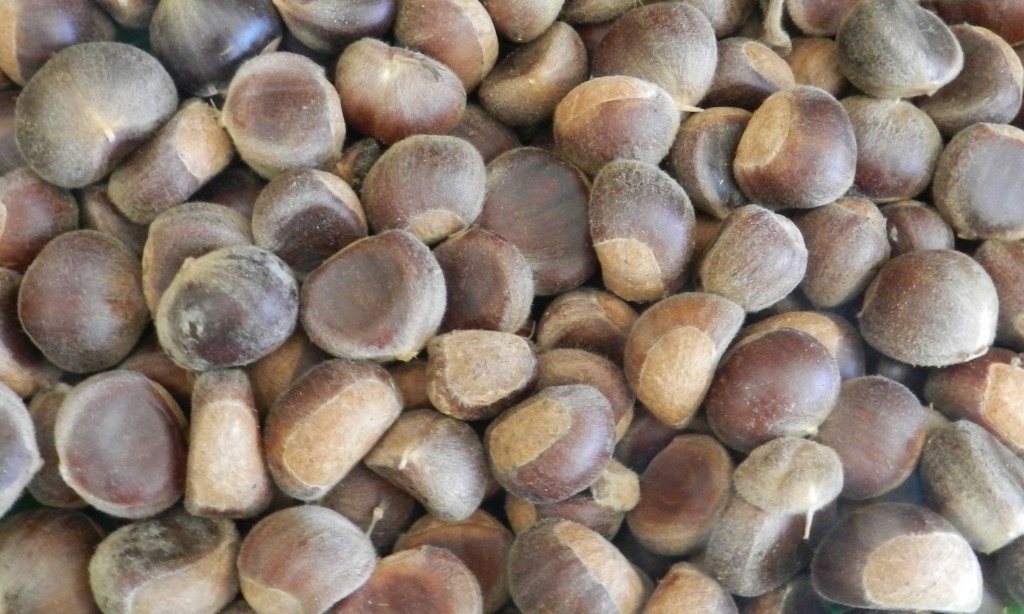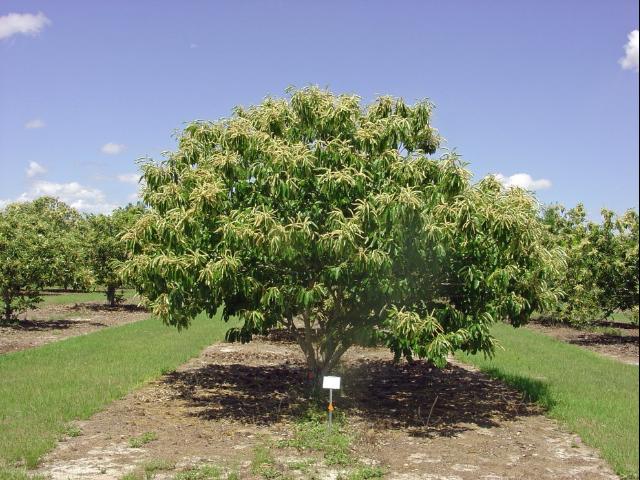
The American chestnut (Casteneae dentata) was once the most dominant hardwood species in North America until the introduction of the Chestnut Blight fungus (Cryphonectria parasitica) which ultimately destroyed over 3 billion trees. The first European settlers found that North America was virtually a solid chestnut forest. The Chestnut Blight fungus was accidentally introduced from Asia to North America in about 1900. This fungus attacks the xylem vessels of trees, severely curtailing water uptake and transpiration. The loss of the American Chestnut was one of the largest mass extinctions occurring in North America.
The American chestnut-based ecosystem supplied animals and humans with sustenance, and the nuts were highly valued for their high carbohydrate content. Unlike most other tree nuts, the chestnut is low in fat, yet high in carbohydrates. Also, essential amino acids represent a high proportion of the amino acid profile.
The Chinese chestnut (C. mollissima) evolved with the Chestnut Blight fungus and is, therefore, highly resistant to this disease. Chestnut Blight also destroyed chestnut trees in Europe and thus, the Chinese chestnut became the major chestnut of commerce.
In the 1950’s Dr. Robert Dunstan selected somewhat blight resistant American chestnut trees and crossed them with Chinese chestnuts to produce Dunstan hybrid chestnut trees. These hybrid trees were planted in North Carolina and Florida, and none of them has shown evidence of Chestnut Blight in either location. Nuts from these hybrid trees are generaly larger (28 to 32 nuts per pound) when compared to the American chestnuts (50 to 75 nuts per pound) and Chinese chestnuts (30 to 40 nuts per pound). They are also less bitter than Chinese chestnuts.

The United States has a very small chestnut industry (less than 1 % of worldwide production), but imports over 20 million dollars of chestnuts each year. There is a strong chestnut industry in Europe and the Orient, and the US imports are mainly from Italy, China, and Korea. The development of Dunstan hybrid chestnuts has made it possible for the expansion of a US chestnut industry. These chestnut hybrid trees bear nuts after about 5 years of age.
The current recommendation is to propagate chestnut trees from seed. In the past, many grafted trees had not performed well due to graft incompatibility. The marketing of chestnut trees in the United States has been primarily through local or direct market sales. The wholesale price of chestnuts can vary from $1.00 to $2.50 per pound; retail prices can be as high as double the wholesale price. Dunstan hybrid chestnut quality has the potential to be superior to Chinese chestnuts and European (Castanea sativa) chestnuts.
A 5 acre variety trial of the following cultivars will be established at the North Florida Research and Education Center in Quincy, Florida (NFREC-Quincy). Seeds from the following cultivars: Auburn Cropper, Carolina, Carpenter, Revival, Williamette, and a seedling of each, will be planted at a 20’ x 25’ within and between row spacing. The Suwannee Valley Agriculture Extension Center has had a successful Dunstan chestnut planting for at least 20 years. These hybrids are sustainable and have been grown without insecticides or fungicides. Drip irrigation will be supplied. Fertilizer will be applied every 6 weeks from March thru August. Growth, yield, and nut size will be monitored over time.
For more information about the American Chestnut, the Chinese Chestnut, and production and marketing of chestnuts in the Southeastern United States, please read the following publications:
UF/IFAS Sites and Publications:
Other Sites
 0
0
